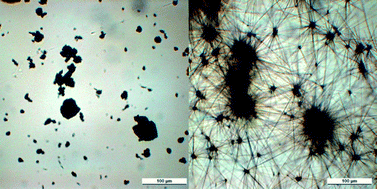The role of solubility and critical temperatures for the efficiency of sorbitol clarifiers in polypropylene
Abstract
The optical properties of polypropylene (PP) were modified by nine different sorbitol type clarifiers available commercially or synthesized in the study. The solubility of the clarifiers in PP was estimated by thermodynamic model calculations. The results showed that the solubility of these additives in PP is small, a few 1000 ppm at most. Solubility is determined by the chemical structure of the sorbitol, and the heat of fusion of the latter changes solubility by at least one order of magnitude. Solubility can be estimated reasonably by the Flory–Huggins lattice theory. The morphology of most sorbitols transforms at a temperature much below their melting point upon heating. This transformation, which is accompanied by crystal perfection, seems to influence melting and solubility. A fibrillar structure forms upon the cooling of molten sorbitols, but the diameter of the fibrils is much larger than those forming in the polymer melt. The nucleating effect of the clarifier depends on solubility, but also on processing conditions. Nucleus density is related to the amount of dissolved clarifier. A close correlation was found between the Flory–Huggins interaction parameter of sorbitols and the smallest achievable haze, which can be explained by the effect of solubility and nucleus density.


 Please wait while we load your content...
Please wait while we load your content...